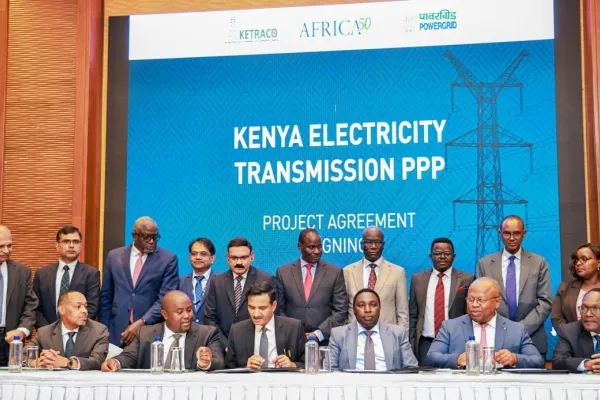The waiting game: freshers on the edge of hope
The waiting game: freshers on the edge of hope
In a country bursting at the seams with promises, there exists a shared hope among Kenyan university freshers – a hope for a brighter future through education. But at times, hope can seem as fragile as an elusive butterfly, always just within reach yet constantly fluttering away.
Imagine this: thousands of determined young minds, prepared to embark on their academic journeys, were uplifted by the assurance of receiving timely government funding under Kenya's new university financing model. However, for now, they must wait patiently, only to discover themselves caught in what appears to be an unending pause. Two months have elapsed, and the promise remains unfulfilled as the government maintains its silence, leaving these eager souls in a state of limbo.
Raphael, a student at Kisii University, captures the gravity of the plight for thousands of freshers. "Tangu tulipoingia hatujawahi ona dalili yoyote ya kupata pesa hizo," Raphael told Citizen TV. For two months now, Raphael has been pooling resources with two other freshers to meet their food and accommodation costs in a location outside of the University.
"Wengi wetu tunaishi bila pahali pazuri pa kulala wala kusomea. Maisha ni magumu kabisa, kila ninavyokumbusha mzazi tunahitaji vitabu au lab coat ya kutumia kwa mahabara wanasema vumilia, hatuna chochote," Raphael adds.
To help alleviate their suffering, student leaders, drawn from universities and TVET institutions in Kenya, are threatening to escalate the push to ensure the government releases funds, paralyzing learning starting on Tuesday next week.
This is a tale of resilience, patience, and the unwavering spirit of those who, against all odds, persist in their belief in the transformative power of education. It is a story that underscores the agony of anticipation, the vexation of uncertainty, and the indomitable determination of these students who are navigating the perilous seas of Kenya's bureaucracy.
Since President William Ruto's announcement of a new higher education financing model, opinions have been varied with the discussions going beyond the confines of academia. Just as Nelson Mandela's choice of words "Education is the most powerful weapon we can use to change the world," transformed an ordinary presentation into a historic address, Dr Ruto's policy shift is not only igniting conversations about the real cost of education in Kenya but leaving freshers on the edge of hope.
Education empowers individuals
In Kenya, education is not merely a conduit for the acquisition of knowledge; it is a catalyst for reshaping lives, communities, and entire nations. As the world undergoes change, the foundation of progress remains rooted in education. Education empowers individuals with the tools they need to navigate the complexities of modern life. It nurtures critical thinking, creativity, and innovation, enabling students to surmount challenges, adapt to evolving landscapes, and envision new horizons.
For many in Kenya, however, higher education may remain nothing more than a dream, given the cost implications in an economy with dwindling incomes due to higher taxes, unemployment, and soaring cost of living.
Listen to audio story her; More on Spotify @ProPodcast
The burden of this cost implication is manifesting within Kenyan universities, which are the architects of the journey towards enlightenment and progress. Universities bear the responsibility of not only imparting knowledge but also instilling values, nurturing curiosity, and fostering a lifelong love for learning. However, as the first semester of the 2023/24 academic year draws to a close, a cloud of uncertainty regarding government financing envelops thousands of students, parents, and guardians across Kenya.
In Kenya, the funding from the National Treasury has not matched the cost of university education, university expansion, and rising student enrolment. This, coupled with limited internally generated revenue, has plunged universities into pending bills of over Kes60 billion. In light of the projected increase in enrolment, having a sustainable financing framework for universities is essential.
Distraught parents
The implementation of Kenya's new higher education financing model has left students unaware of the extent of government support they can expect. "Waliambiwa watasortiwa December. Wale ambao walitumiwa pesa ya HELB juzi ni the continuing students (Second Years kuendelea mbele)," a distraught parent, whose son joined JKUAT in early September told Maudhui.
While the student enrolled at JKUAT without being asked to pay a penny in tuition fees, the parent has been left struggling to find money for their son to buy food. This is a cost that the parent expected the government to have taken over by now through Helb disbursement.
In May this year, President Ruto introduced a financing model designed to primarily benefit students from the economically disadvantaged backgrounds. The plan categorizes students into four quadrants: vulnerable, extremely needy, needy, and less needy.
Out-of-pocket contributions
According to the new model, student loans, bursaries and scholarships will be awarded through approved criteria and Means Testing Instruments (MTI) that ensure access, equity, inclusivity and affirmative action. In addition, there is preferential funding for students studying courses related to Science, Technology, Engineering, Mathematics, and Innovation (STEMI) and other approved Government development plans.
The MTI assessment will determine the extent of government scholarship, Higher Education Loans Board (HELB) loan access, and out-of-pocket contributions from parents/guardians. This dynamic approach recognizes that circumstances change, and one's financial standing can fluctuate, too.
In the fiscal year 2023/24, the National Treasury doubled the allocation to Higher Education Loans Board to Kes30 billion from Kes15 billion in anticipation of the fresh financing model.
STUDENT CATEGORY SCHOLARSHIP (%) LOANS (%) OUT OF POCKET (%) Vulnerable 82 18 0 Extremely Needy 70 30 0 Needy 53 40 7 Less Needy 38 55 7
For those classified as vulnerable, the government will provide a scholarship covering 82 percent of tuition fees, along with an 18 percent loan component, effectively relieving parents from tuition expenses. However, this package will see the parents contribute towards other essential aspects of their child's education such as accommodation, food, and clothing.
The model extends to the extremely needy, offering a 70 percent scholarship and a 30 percent HELB loan to cover fees. Needy students, falling into the third category will receive a 43 percent scholarship and a 40 percent HELB loan, while the remaining 7 percent of fees will be the responsibility of parents or guardians.
Criteria for classification
The less needy category receives a 38 percent scholarship and shoulders a higher loan burden of 55 percent, with parents contributing 7 percent. The criteria for classification encompass family economic background, expenditure, social demographics, and unique circumstances. Truthful disclosure during the application process is crucial, as this information informs the level of support offered.
This financing model's implications resonate most profoundly in specific degree courses. Take the Bachelor of Medicine, and Bachelor of Surgery (MBChB) as an example. Tuition fees for this course range from Kes600,000 at the University of Nairobi to Kes336,940 at Egerton University annually.
The financial burden of medical education is a topic of significance, and a closer look at the financial breakdown of an MBChB program at Moi University in Kenya sheds light on the implications and choices students and their families are grappling with.
For a MBChB program student admitted at Moi University, the annual tuition fees amount to Kes612,000. Over the course of six years, the total fees rises to Kes3,672,000. This figure sets the stage for understanding the financial dynamics within the context of the newly introduced financing model in Kenya.
Level of financial need
In this model, students are categorized based on their level of financial need, ranging from vulnerable to less needy. Let's consider the scenario for a vulnerable student. Out of the annual tuition fee of Kes612,000, the government steps in to cover Kes501,840 or 82 percent of the total cost. Further, the student is eligible for a Helb loan of Kes110,000 annually, resulting in an accumulated loan of Kes660,000 upon graduation in six years.
For an extremely needy student, the government's support covers 70 percent of the annual fee, amounting to Kes428,400. With an additional Helb loan of Kes183,600 each year, the student graduates with a loan totaling Kes1.1 million.
The situation becomes more complex for students falling under the "needy" category. The government's scholarship contributes 43 percent of the annual tuition fee, equal to Kes263,160.
Meanwhile, the student is granted a Helb loan of 40 percent, which is Kes244,000 per year. This leaves a financial gap of Kes42,840 that the parent or guardian must shoulder. By the time the student completes their studies, the accumulated loan stands at Kes1.7 million.
The financial implications of the financing model point to a sobering reality that parents must critically consider the debt their child will carry post-graduation. With a medical degree in hand, the newly minted doctor embarks on their professional journey, equipped with the knowledge and skills to contribute to healthcare and society. However, the weight of the accumulated loans adds a layer of financial responsibility that can influence the trajectory of their career and personal life.
Student's financial situation post graduation
The decision of whether to opt for government scholarship, partial scholarship, or a larger loan has a significant bearing on a student's financial situation after graduation. Parents, guardians, and students themselves are faced with the question: Is the pursuit of a medical career worth starting life with such a debt?
While calming a weary public on the even of starting the 2023/24 academic year, Education Cabinet Secretary Ezekiel Machogu has some uncomfortable message to cash-strapped universities. "Universities and colleges shall admit all students from the 2022 Kenya Certificate of Secondary Education cohort as placed by the Kenya Universities and Colleges Central Placement Service, pending the processing of their application for funding."
In early September the CS extended the deadline for students to file their application for government financing to October 7. The application portal, which opened on July 31, 2023, had registered 156,532 applications out of the targeted 265,000 as of September 7. This was roughly 56 percent of the students joining universities and technical and vocational education training institutions in Kenya.
As the world recognizes the critical role of medical professionals, it is imperative to foster a system that ensures equitable access to quality education while mitigating the burden of student debt. As prospective students and their families weigh these financial considerations, the new financing structure forces careful education planning. Post-graduation debt will undoubtedly influence career choices and life plans.
Just as Mandela's words emphasized education's transformative power, this new financing model's implementation underscores the profound impact financial planning has on Kenya's aspiring minds.
In the spirit of Mandela's wisdom, let us remember that education's true value extends beyond textbooks and lectures; it is an investment in a brighter, more equitable future for Kenya and beyond.



